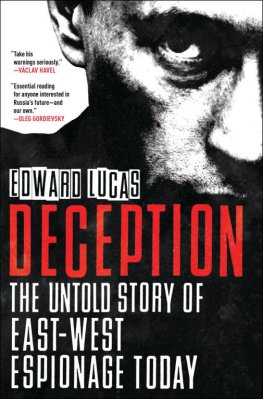E. V. (Edward Verrall) Lucas - A Wanderer in Florence
Here you can read online E. V. (Edward Verrall) Lucas - A Wanderer in Florence full text of the book (entire story) in english for free. Download pdf and epub, get meaning, cover and reviews about this ebook. year: 2021, publisher: Library of Alexandria, genre: Detective and thriller. Description of the work, (preface) as well as reviews are available. Best literature library LitArk.com created for fans of good reading and offers a wide selection of genres:
Romance novel
Science fiction
Adventure
Detective
Science
History
Home and family
Prose
Art
Politics
Computer
Non-fiction
Religion
Business
Children
Humor
Choose a favorite category and find really read worthwhile books. Enjoy immersion in the world of imagination, feel the emotions of the characters or learn something new for yourself, make an fascinating discovery.

- Book:A Wanderer in Florence
- Author:
- Publisher:Library of Alexandria
- Genre:
- Year:2021
- Rating:3 / 5
- Favourites:Add to favourites
- Your mark:
- 60
- 1
- 2
- 3
- 4
- 5
A Wanderer in Florence: summary, description and annotation
We offer to read an annotation, description, summary or preface (depends on what the author of the book "A Wanderer in Florence" wrote himself). If you haven't found the necessary information about the book — write in the comments, we will try to find it.
A Wanderer in Florence — read online for free the complete book (whole text) full work
Below is the text of the book, divided by pages. System saving the place of the last page read, allows you to conveniently read the book "A Wanderer in Florence" online for free, without having to search again every time where you left off. Put a bookmark, and you can go to the page where you finished reading at any time.
Font size:
Interval:
Bookmark:

Chapter I The Duomo I: Its Construction
Chapter II The Duomo II: Its Associations
Chapter III The Duomo III: A Ceremony and a Museum
Chapter IV The Campanile and the Baptistery
Chapter V The Riccardi Palace and the Medici
Chapter VI S. Lorenzo and Michelangelo
Chapter VII Or San Michele and the Palazzo Vecchio
Chapter VIII The Uffizi I: The Building and the Collectors
Chapter IX The Uffizi II: The First Six Rooms
Chapter X The Uffizi III: Botticelli
Chapter XI The Uffizi IV: Remaining Rooms
Chapter XII "Arial Fiesole"
Chapter XIII The Badia and Dante
Chapter XIV The Bargello
Chapter XV S. Croce
Chapter XVI The Accademia
Chapter XVII Two Monasteries and a Procession
Chapter XVIII S. Marco
Chapter XIX The SS. Annunziata and the Spedale Degli
Innocenti
Chapter XX The Cascine and the Arno
Chapter XXI S. Maria Novella
Chapter XXII The Piazza Vittorio Emmanuele to S. Trinit
Chapter XXIII The Pitti
Chapter XXIV English Poets in Florence
Chapter XXV The Carmine and San Miniato
Historical Chart of Florence and Europe, 1296-1564
Laurenziana
Top of Or San Michele
Portico of the Uffizi
By Donatello, in the Museum of the Cathedral
By Ghiberti, from his second Baptistery Doors
By Benozzo Gozzoli, in the Palazzo Riccardi
By Michelangelo, in the New Sacristy of S. Lorenzo
By Verrocchio, in a niche by Donatello and Michelozzo in the wall of
Or San Michele
By Verrocchio, in the Palazzo Vecchio
Ascribed to Filippino Lippi, in the Uffizi
By Leonardo da Vinci, in the Uffizi
By Luca Signorelli, in the Uffizi
By Botticelli, in the Uffizi
By Botticelli, in the Uffizi
By Andrea del Sarto, in the Uffizi
By Raphael, in the Uffizi
By Franciabigio, in the Uffizi
By Mino da Fiesole, in the Badia
By Donatello, in the Bargello
By Verrocchio, in the Bargello
By Donatello, in the Bargello
By Verrocchio, in the Bargello
By Luca della Robbia, in the Bargello
By Luca or Andrea della Robbia, in the Bargello
By Desiderio da Settignano, in S. Croce
By Michelangelo, in the Accademia
By Fra Angelico, in the Accademia
By Ghirlandaio, in the Accademia
By Fra Bartolommeo, in the Accademia
By Botticelli, in the Accademia
By Botticelli, in the Accademia
By Fra Angelico, in the Convent of S. Marco
By Luca della Robbia, in the Spedale degli Innocenti
By Ghirlandaio, in S. Maria Novella
By Raphael, in the Pitti
By Raphael, in the Pitti
By Giorgione, in the Pitti
By Botticini, in the Pitti
By Perugino, in the Pitti
By Boccaccio Boccaccini, in the Pitti
ImmensityArnolfo di CambioDante's seatRuskin's "Shepherd"Giotto
the variousGiotto's funThe indomitable BrunelleschiMakers of
FlorenceThe present faade.
Font size:
Interval:
Bookmark:
Similar books «A Wanderer in Florence»
Look at similar books to A Wanderer in Florence. We have selected literature similar in name and meaning in the hope of providing readers with more options to find new, interesting, not yet read works.
Discussion, reviews of the book A Wanderer in Florence and just readers' own opinions. Leave your comments, write what you think about the work, its meaning or the main characters. Specify what exactly you liked and what you didn't like, and why you think so.







